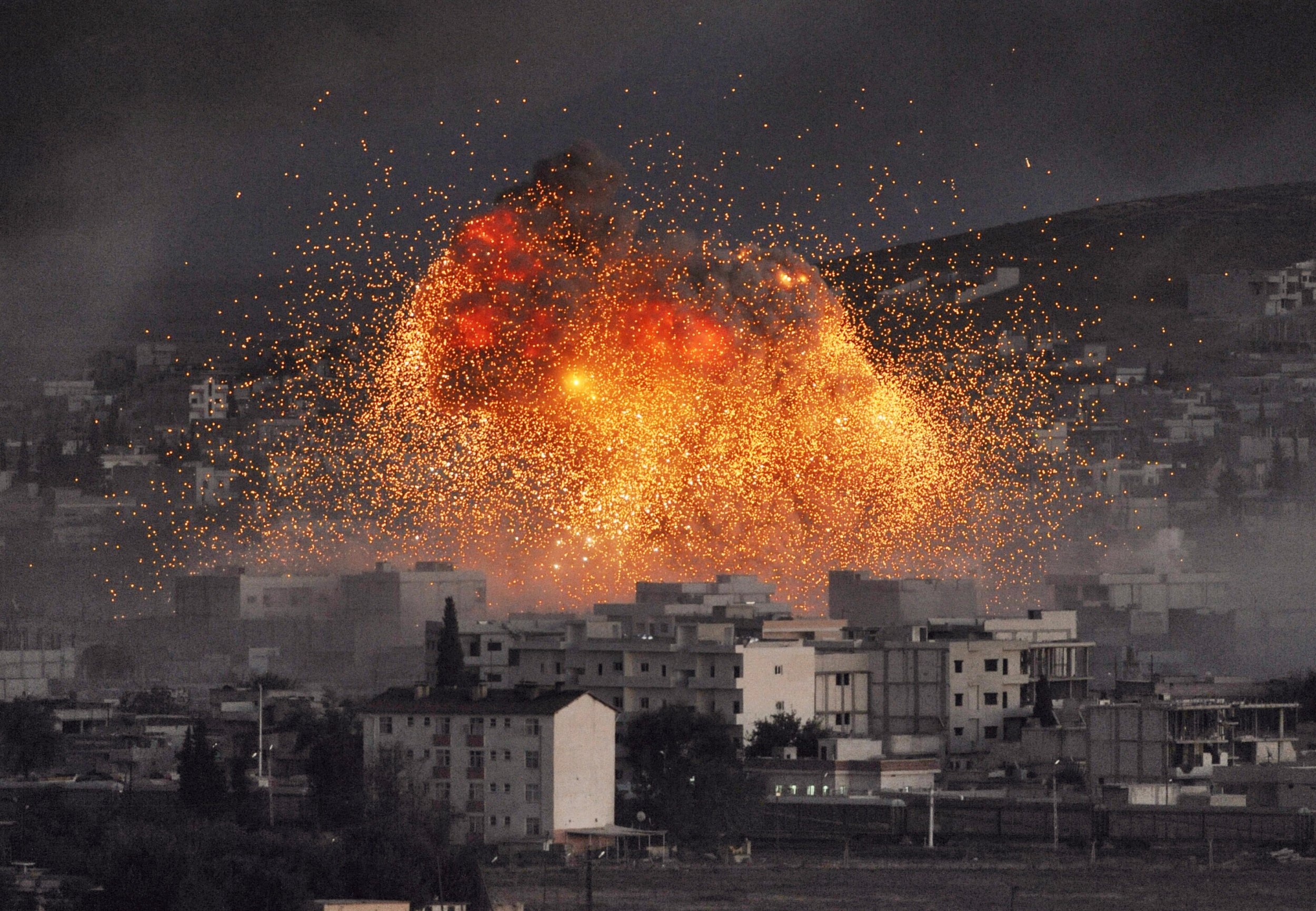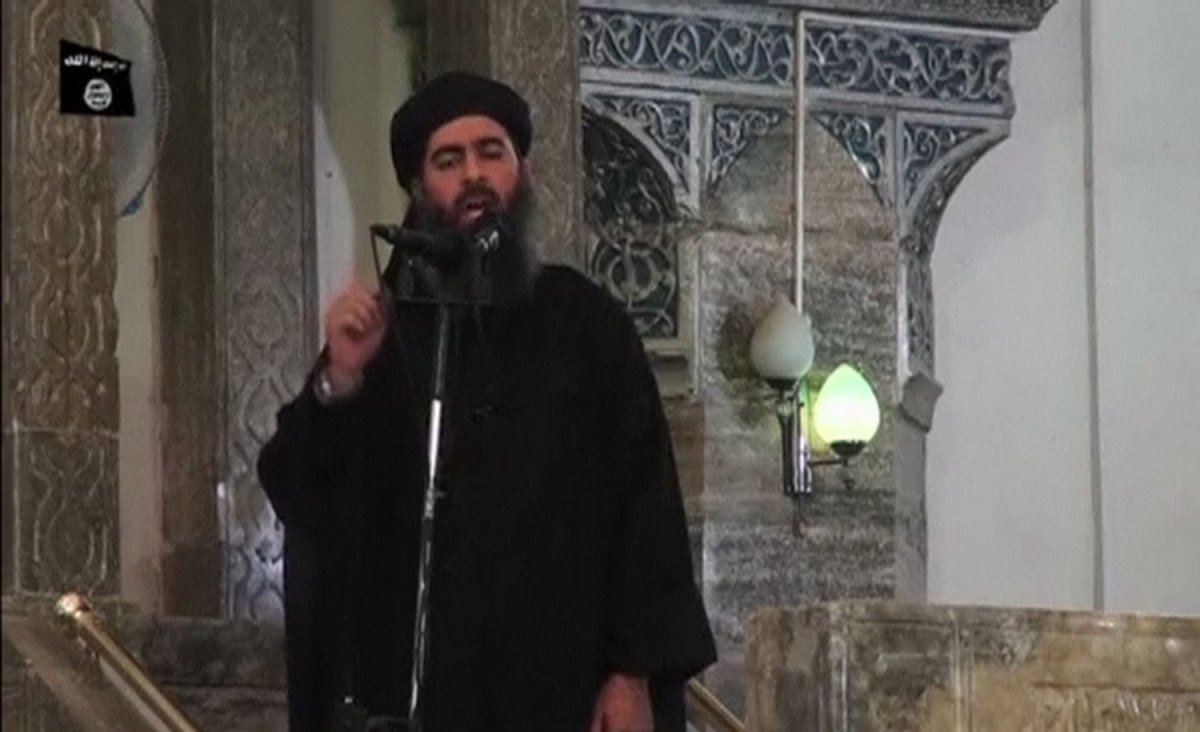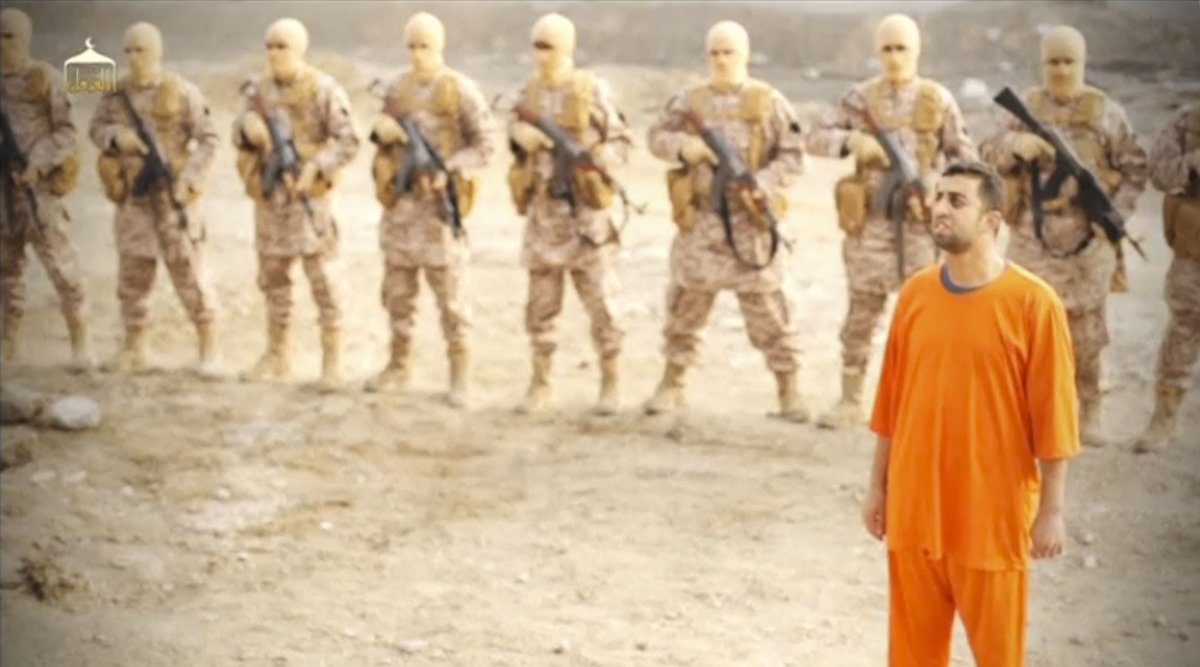
The Islamic State militant group (ISIS) is an entity that has captivated the world. It adorns the front-pages of the world's biggest newspapers, the television screens of millions of viewers and the policy notes of the world's most powerful governments, for all the wrong reasons.
It has risen to become the flag-bearer of the global jihad with a barbaric, medieval ideology that casts a shadow over 21st century borders. But how did we get to this point?
Iraqi Origins
The group's roots lie in the U.S. occupation of Iraq from 2003 onwards, when Jordanian extremist and ISIS's spiritual founder Abu Musab Zarqawi pledged allegiance to Al-Qaeda, transforming his al-Tawhid wal-Jihad group into Al-Qaeda in Iraq (AQI).
Two years later, a U.S. air strike killed Zarqawi and the group is rebranded as the Islamic State in Iraq (ISI), bringing together Zarqawi's Al-Qaeda faction with other radical groups. Zarqawi was replaced by Abu Omar al-Baghdadi while Egyptian extremist Abu Ayyub al-Masri became the group's military commander.
In the following years, the group made Western targets its primary focus in Iraq, particularly U.S. forces, as well as exploiting the instability of the Iraq War to attack the country's Shia Muslims. A joint Iraqi-U.S. operation killed both al-Baghdadi and al-Masri in 2010. Their replacement was the man who would become the present-day leader of ISIS: Abu Bakr al-Baghdadi.
ISI suffered a series of setbacks because of U.S. operations in Iraq, but upon the U.S. withdrawal and the onset of the Syrian civil war, both in 2011, the group capitalized on the power vacuum in both countries to bolster its ranks and influence. Baghdadi deployed ISI members to Syria to form an organization and they founded the Nusra Front as an Al-Qaeda arm in the country in early 2012.

A year passed and a power struggle emerged between the Iraqi and Syrian arms of the overarching jihadi group of Al-Qaeda from April 2013 onwards. Baghdadi announced that both would merge to become the Islamic State of Iraq and the Levant (ISIL). The group would become to be known widely as the Islamic State of Iraq and Syria, but countries such as the U.S. still retain the original name.
ISIS Splits With Al-Qaeda
However, the leader of Nusra, Abu Muhammad al-Julani, and the leader of Al-Qaeda, Ayman al-Zawahiri, both rejected Baghdadi's attempt to merge the two under a new umbrella. But Nusra fighters, including entire battalions, began to defect to Baghdadi's Syrian arm, particularly in the region of Raqqa, giving them a territorial hold in what would later become the group's de-facto capital.
These defections enabled ISIS to take full control of the city from Syrian regime forces in January 2014 and, in the same month, ISIS fighters, with allied Sunni rebels, took two-thirds of the Iraqi city of Fallujah, its first territorial conquest in Iraq under the new brand.
In February 2014, Al-Qaeda's leadership, who had balked at the brutality of Baghdadi's arm, announced that it was cutting ties with ISIS. The previous October, Zawahiri had ordered ISIS to stop operating in Syria to allow Nusra to be the predominant force but Baghdadi refused. The split allowed ISIS to stand on its own in both Iraq and Syria for the first time, after using Al-Qaeda's brand as a springboard.
In 2014, the group embarked on a widely-documented campaign to obtain territory in Syria and Iraq, capturing the Iraqi hometown of Saddam Hussein, Tikrit, in June; the country's second-largest city, Mosul, in the same month; and strengthening its hold over Raqqa by establishing its radical version of Islamic law in the city.
The group propagated the presence of ISIS billboards and sharia courts, parades and executions in the city to convey an image of strength. Supporters used Twitter, Facebook and YouTube to spread the group's message that would serve as a radical echo chamber for potential foreign recruits. Thousands of jihadis from Europe, Chechnya, North Africa, Jordan and Saudi Arabia, to name a few territories, made the journey to join the caliphate in Iraq and Syria. Many arrived through Turkey's porous border with Syria and many who had already entered Syria to fight in the civil war defected to join the group.

Following the capture of Mosul, ISIS militants released an audio recording that announced the creation of a caliphate, or state ruled by Islamic law, rebranding the group again as the "Islamic State." The message proclaimed Baghdadi to be the caliph of "Muslims everywhere." He made his first public appearance as ISIS caliph at a mosque in the city in July 2014.
Hostages and Propaganda
These two months of expansion, rebranding and propaganda made the world sit-up. The group now oversaw a de-facto state in the Middle East, with territory bigger than the size of Belgium. The group continued to project its power to Western audiences through propaganda and its beheadings of Syrian soldiers soon turned to Western hostages, those who were captured earlier in the Syrian civil war and held in ISIS-controlled territory, mainly in Raqqa.
ISIS executioner Mohammed Emwazi beheaded U.S. journalists James Foley and Steven Sotloff in August and September, shocking the world and pushing a U.S.-led coalition to begin a bombing campaign against the group in Iraq and Syria. The group proceeded to release beheading videos of British hostages David Haines and Alan Henning and U.S. hostage Peter Kassig in the next two months. "Jihadi John," as Emwazi became known, was sold by ISIS as the Western poster boy for the group's campaign of horror before he was killed in a U.S. drone strike in November 2015.
In September 2014, the group released propaganda videos using British journalist John Cantlie, whose status remains unknown, as a presenter against his own will. The group continued to propagate its message and brutal actions in a monthly magazine, named Dabiq, aimed at an English audience. The executions continued into 2015, each time with a different demand of a ransom or to stop some form of Western military action in the Middle East.
The murders of Japanese hostages Haruna Yukawa and Kenji Goto followed in January 2015 and a Jordanian pilot was shown being immolated to death in a cage in February. In the same month, ISIS executed 21 Coptic Egyptians on the Mediterranean coast in Libya, where the group had established an affiliate the previous October and went on to take control of the central city of Sirte in June 2015.

As other radical groups sought to piggyback on ISIS's international brand of jihad, similar affiliates were established in Nigeria (Boko Haram), the Philippines (Abu Sayyaf), Dagestan (Vilayat Dagestan), Egypt (Sinai Province) and Afghanistan and Pakistan (Khorasan Province), among others.
'Volcanoes of Jihad'
In November 2014, Baghdadi released a rare audio tape calling on ISIS sympathizers around the world to "erupt volcanoes of jihad everywhere." As a result of Baghdadi's message and the spread of ISIS's toxic brand across the world, deadly attacks linked to the group—both lone wolf and coordinated by ISIS itself—increased in number in 2015.
Bombings or shootings claimed by ISIS struck Ankara, Beirut, Garland, Kuwait City, Paris twice, Qudayh, Sanaa thrice, San Bernardino, Sousse, Suruc, Tripoli, Tunis, and a Russian aircraft over Egypt's Sinai Peninsula, killing at least 899 people. These attacks were in addition to the territorial gains of the Iraqi city of Ramadi and the ancient Syrian city of Palmyra in May 2015 and the group's destruction of ancient heritage in the latter and in the ancient Iraqi city of Nimrud, through the use of explosives and bulldozers.
ISIS now faces attacks on all fronts. Iraqi coalition forces recaptured the cities of Tikrit in March and Sinjar and Ramadi, both in December 2015. Russia began an airstrike campaign against the group in September 2015 and the U.S.-led coalition continues to damage its infrastructure in Syria and Iraq. Syrian Kurds and Iraqi Kurds continue to capture ISIS territory on the ground in both countries and social media companies are ramping up the online war to rid ISIS propaganda from their platforms.
While ISIS's brand and territorial hold is diminishing, the group continues to play a cat and mouse game on Twitter and on other messaging platforms, such as the privacy apps Telegram and Wickr; holds a swathe of territory larger than Belgium and the Netherlands combined; still garners significant amounts of revenue from its state-like taxation within the caliphate; and has inspired and directed further attacks into 2016 in Jakarta, Homs and Damascus. The radical Islamist group, whether we like it or not, will remain a global issue that dominates the jihadi sphere for the rest of 2016 and possibly beyond.
Uncommon Knowledge
Newsweek is committed to challenging conventional wisdom and finding connections in the search for common ground.
Newsweek is committed to challenging conventional wisdom and finding connections in the search for common ground.
About the writer
Jack is International Security and Terrorism Correspondent for Newsweek.
Email: j.moore@newsweek.com
Encrypted email: jfxm@protonmail.com
Available on Whatsapp, Signal, Wickr, Telegram, Viber.
Twitter: @JFXM
Instagram: Read more
To read how Newsweek uses AI as a newsroom tool, Click here.








